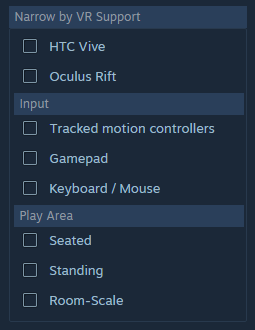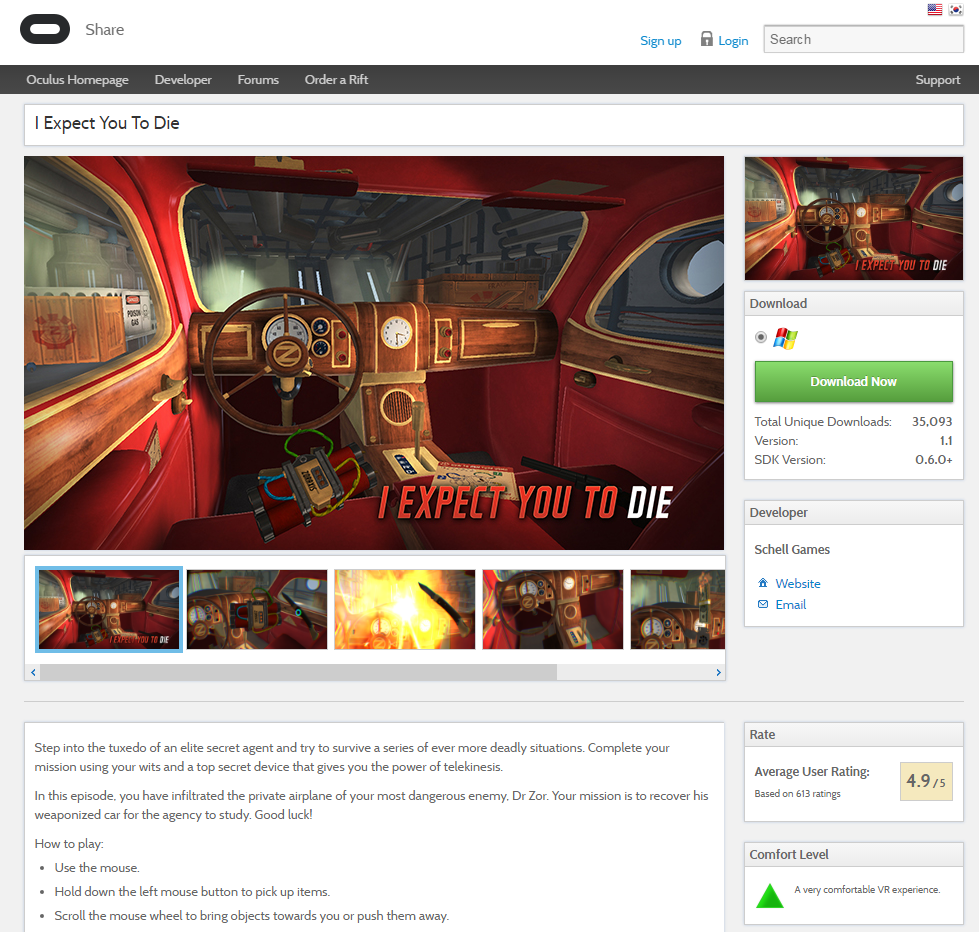How should we talk about virtual reality games, when it comes to their genre? That's a question posed by Samsung at its Samsung Developer Conference, caught by UploadVR. Traditional genre terms like 'role-playing game', 'simulation', and 'strategy' don't really give enough detail when it comes to the specifics of how the experience works with VR hardware.
Samsung's own definitions extend beyond gaming, as its Gear VR headset offers experiences that don't necessarily involve traditional interactivity. To that end, Samsung executive vice president John Pleasants elaborated upon the company's eight major "genres" of VR experiences. They are:

- Gaming
- News
- Real Estate
- Social
- Animation
- Entertainment
- Art / Creativity / 3D Modeling
- Experiential
These eight categories offer broad enough coverage of most of the types of VR experiences we've seen to date. But what about gaming itself? If we're mainly interested in that category, what else can we do to help classify VR games in a way that's helpful and informative.
Valve's approach is to delineate games by their hardware requirements. As the SteamVR store indicates, VR games that are available on Steam can be filtered by specific hardware experiences. This includes the headset brand (Oculus Rift, or HTC Vive); input type (tracked motion controllers, gamepad, or keyboard and mouse); and "play area" (seated, standing, room-scale). This is highly useful for a store that offers support for multiple headsets, and gives you a good idea of what the play experience is going to be like from a mechanical sense.
The Oculus Store doesn't need to worry about such support, since it's only catering to specific headsets. To that end, the store offers more traditional genre terms (Action, Fighting, Shooter, etc) but also includes a separate category for "360 Video". An additional filter includes more VR-specific options, allowing for "Full Game", "Experience", "Tech Demo" and others to define the type of content. Finally, a "comfort level" helps to indicate how intense the experience would be, ranging from "comfortable", to "moderate", to "intense".
Though we've yet to see how Sony will classify its PlayStation VR titles, it's still interesting that three major VR players are all using entirely different systems to categorise VR content. The thing is, there's no wrong answer - all of these methods are valuable. We'd like to see a "comfort level" added to Steam's listings. Similarly, once the Oculus Touch launches, we imagine Oculus will need to add Steam-like hardware requirements to its own games. Still, even with all these descriptors, it would be nice to know what we're going to be doing once we're in the VR game itself: firing a gun, driving a car, or swinging a sword?













